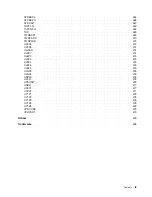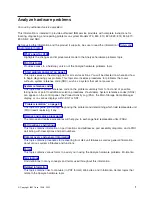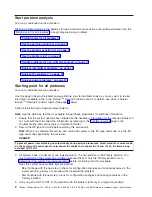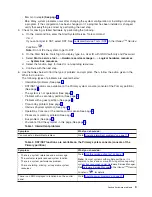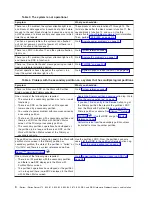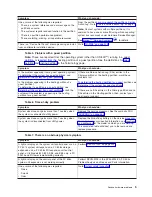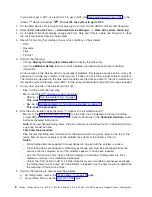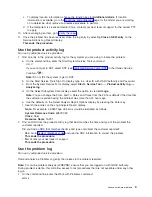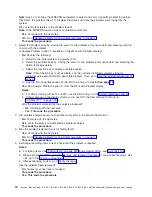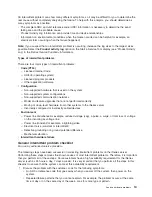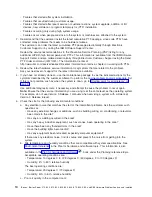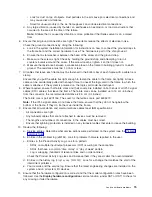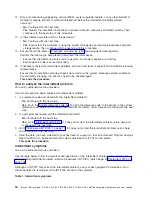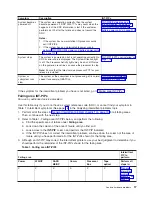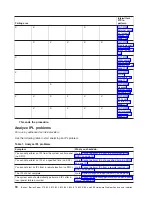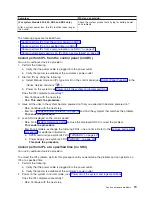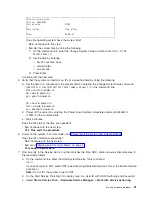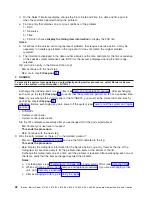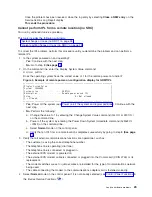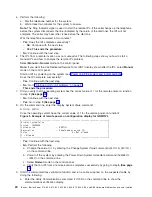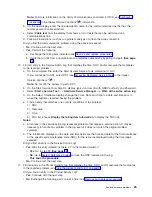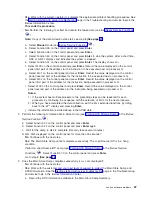
An
intermittent
problem
can
show
many
different
symptoms,
so
it
may
be
difficult
for
you
to
determine
the
real
cause
without
completely
analyzing
the
failure.
To
help
with
this
analysis,
you
should
determine
as
many
symptoms
as
possible.
v
The
complete
SRC
and
unit
reference
code
(URC)
information
is
necessary
to
determine
the
exact
failing
area
and
the
probable
cause.
v
Product
Activity
Log
information
can
provide
time
and
device
relationships.
v
Information
on
environmental
conditions
when
the
failure
occurred
can
be
helpful
(for
example,
an
electrical
storm
occurring
when
the
failure
happened).
Note:
If
you
suspect
that
an
intermittent
problem
is
occurring,
increase
the
log
sizes
to
the
largest
sizes
possible.
Select
the
Product
activity
log
option
on
the
Start
a
Service
Tool
display
(see
″
Product
Activity
Log
″
in
the
iSeries
Service
Functions
information).
Types
of
intermittent
problems
There
are
four
major
types
of
intermittent
problems:
v
Code
(PTFs)
–
Licensed
Internal
Code
–
OS/400
(operating
system)
–
Licensed
program
products
–
Other
application
software
v
Configuration
–
Non-supported
hardware
that
is
used
on
the
system
–
Non-supported
system
configurations
–
Non-supported
communication
networks
–
Model
and
feature
upgrades
that
are
not
performed
correctly
–
Moving
of
down-level
hardware
from
other
systems
to
the
iSeries
server
–
Incorrectly
configured
or
incorrectly
cabled
devices
v
Environment
–
Power
line
disturbance-for
example,
reduced
voltage
(sag),
a
pulse,
a
surge,
or
total
loss
of
voltage
on
the
incoming
ac
voltage
line
–
Power
line
transient-for
example,
a
lightning
strike
–
Electrical
noise
(constant
or
intermittent)
–
Defective
grounding
or
a
ground
potential
difference
–
Mechanical
vibration
v
Intermittent
hardware
failure
General
intermittent
problem
checklist
For
use
by
authorized
service
providers.
The
following
steps
have
been
successful
in
correcting
intermittent
problems
on
the
iSeries
server.
Performing
these
steps
removes
the
known
causes
of
most
intermittent
problems.
Therefore,
it
is
important
that
you
perform
all
of
these
steps.
Some
customers
have
a
high
availability
requirement
for
the
iSeries
server
(such
as
24
hours
a
day,
7
days
a
week).
It
is
very
important
that
you
perform
all
the
steps
in
this
checklist
to
ensure
that
the
system
can
meet
this
availability
requirement.
1.
Discuss
the
problem
with
the
customer.
Look
for
the
following
symptoms:
v
An
SRC
or
reference
code
that
goes
away
when
you
power
off
the
system,
then
power
on
the
system.
v
Repeated
failure
patterns
that
you
cannot
explain.
For
example,
the
problem
occurs
at
the
same
time
of
day
or
on
the
same
day
of
the
week.
Look
for
some
type
of
pattern.
Analyze
hardware
problems
13

